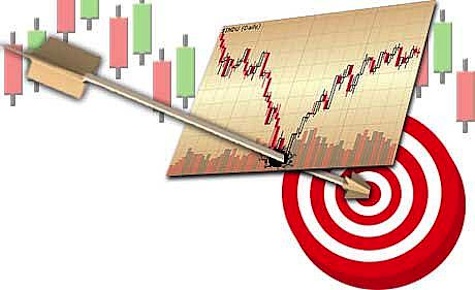Did US beer mergers cause a price increase?
Orley Ashenfelter, Daniel Hosken, Matthew Weinberg, 18 September 2013
Football season is here. Bud, Miller, or Coors, the classic American lagers, are the beverage of choice to accompany the big game throughout the US. Despite the recent surge of microbrews and imports, the big three brands still capture more than 60% of the market. With the recent merger of Miller and Coors only two large national brewers remain. No doubt many beer drinkers have wondered whether this merger has raised the price of their brand.
We have recently taken up the task of answering this question. We did this for two related reasons.
- We wanted to measure net price increases to beer drinkers.
- But we also wanted to see if we could sort out (a) the cost savings that might result from beer production being closer to consumers from (b) the monopolistic pressure on prices that mergers encourage.
What did we find? Well, it turns out there were both anti-competitive effects of the merger and cost saving effects. What this means in practice is that whether a beer drinker faced a price increase or a price decrease depended on where the drinker lived. On average prices neither increased nor decreased, with increases in some markets being offset by decreases in others.
Merger effects in principle
In theory, a merger gives the combined firm an incentive to increase price. Some of the sales that would have been lost pre-merger following a price increase are now recaptured because the product portfolio owned by the firm has increased. Simultaneously, the merger can result in reductions in marginal cost that provide the combined firm with an incentive to lower prices.This cost-versus-margin trade-off has been understood by antitrust economists since at least the publication of Williamson’s (1968) classic paper describing the welfare analysis of mergers. It has been included in the US evaluation of mergers since the publication of the 1982 version of the US Department of Justice’s and Federal Trade Commission’s Horizontal Merger Guidelines. Surprisingly, given their potential importance to policy analysis, there is very little direct evidence that merger specific efficiencies (reductions in marginal cost) can offset the incentive of a merger firm to increase price.
Efficiencies brewed
In June of 2008, the US Department of Justice approved a joint venture between Miller and Coors, then the second and third largest firms in the industry. Although the merger substantially increased concentration in an already concentrated industry, it was allowed because of anticipated reductions in shipping and distribution costs (Heyer et al. 2008). Prior to the merger Coors was brewed in only two locations, while Miller was brewed in six locations more uniformly distributed across the US. The merger was expected to allow the combined firm to economise on shipping costs primarily by moving the production of Coors into Miller plants. These are exactly the kind of cost savings that could offset any incentive to increase prices through a loss of competition.Two features of the beer industry assist us in estimating the effects of the merger.
- First, by law beer is sold through a three-tier distribution chain.
- Second, there were substantial differences in how the merger was expected to increase concentration and reduce costs across markets in our data.
Research design
The basic idea in our paper is to compare price changes across regions that differed in the size of Miller and Coors prior to the merger and how the merger would reduce the distance to the nearest brewery.- Figure 1 demonstrates the approach we took in its simplest form.
- The first panel shows that average prices grew faster in regions where the merger was expected to increase concentration by more, as measured by the increase in the Herfindhal Index (sum of squared market shares), holding constant the reduction in distance.
- On the other hand, price growth tended to be lower in markets where the reduction in distance to the nearest Coors brewery was greater, holding constant the market power effect.

We also explored the timing of these two effects. Firms can likely leverage any increase in market power very soon after the merger is consummated or even after it is announced and management teams begin anticipating combining operations. In contrast, efficiencies gained through shifting production will not be realised until the merger is actually consummated and then may be realised only with some time.
- Figure 2 traces out the timing of the effect of the predicted increase in concentration on pricing.
Figure 2.

Figure 3 presents the timing of the effect of the reduced distance on pricing. The figure shows that the reductions in shipping costs were not passed through until about a year and a half after the merger was approved, consistent with industry documents describing the operations of the combined firm.
Figure 3.

We find that the efficiency effect eventually nearly exactly offset the market power effect in the average market. Despite reducing the number of macro brewers in the US from three to two, the Miller/Coors merger did not harm the average consumer.
Conclusion
Over the past 20 years a large number of studies have studied how mergers have changed pricing. In a meta-analysis, Kwoka (2013) shows that most studies have found that prices rise after competitors merge. However, not all papers find price increases. The evidence in the petroleum industry is mixed, and Ashenfelter and Hosken (2010) found that four out of five large mergers of retail consumer-product manufacturers raised prices. Presumably, cost savings are the reason why some of the studied mergers of competitors did not result in higher prices. Our current work suggests this is the case and takes a step towards getting inside the black box of how mergers change pricing incentives.References
Ashenfelter, Orley and Daniel Hosken, “The Effects of Mergers on Prices: Evidence from Mergers on the Enforcement Margin,” Journal of Law and Economics, 2010, 53 (3), 417-66.Heyer, Ken, Carl Shapiro and Jeffrey Wilder, “The Year in Review: Economics at the Antitrust Division, 2008-2009,” Review of Industrial Organization, 2008, 35, 349-67.
Kwoka, Jon E., “Does Merger Control Work? A Retrospective on US Enforcement Actions and Merger Outcomes,” Antitrust Law Journal, 2013, 38 (3)
Williamson, Oliver, “Economies as an Antitrust Defense: The Welfare Tradeoffs,” The American Economic Review, March 1968, 58 (1), 18-36


